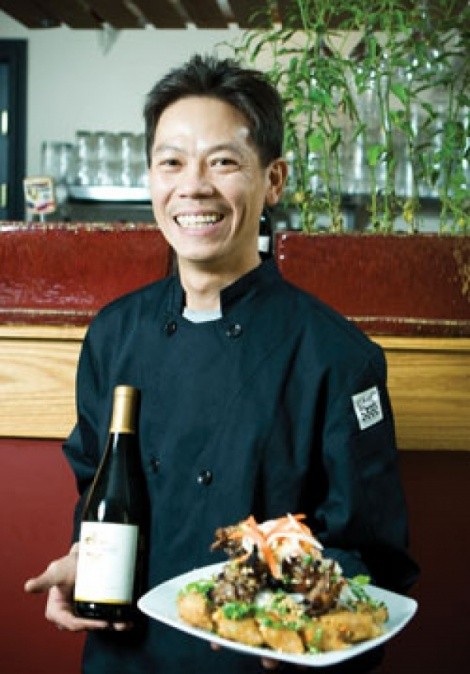
Astute observers recognize the common cycle: boarded-up windows decorate a once-promising restaurant facade—then a colorful new café takes its place, only to be replaced again with the familiar boarded-up décor. It seems like something only the supernatural can explain: The location seems desirable, the food tasty, but diners just don’t come. Are there cursed locations in Salt Lake? If there are, can the dark forces be overcome? First, let’s take a look at a couple of the cursed:
Cursed Locations
• 400 West & 200 South
At first glace, the Dakota Lofts located across from The Gateway seemed like a perfect spot to attract customers with its main-floor restaurant space. However, John Greene, property manager of Cirrus Properties which manages the lofts, thinks differently. “I’ve found that Dakota becomes an island of its own,” said Greene. “People who are at Gateway stay at Gateway.” Greene thinks The Gateway’s construction in 2001 led to the demise of Lakota, the Loft’s first restaurant. Following that, Natalie’s had a brief one-year stay, followed by an even briefer eight-month stay by Ruby Tuesday. In addition to The Gateway’s presence, the restaurant space offered only street parking. “When I want to go eat somewhere and not have to hassle with parking, it’s a plus,” said City Weekly dining critic Ted Scheffler. The space was recently sold for business offices.
• 1355 East 2100 South
More recently, the former site of Harry’s left many wondering if the east Sugar House location could be cursed. Both Harry’s and its predecessor, L’Avenue, experienced short-lived stays at the building, which many thought would be daunting to future business owners. Not so, said realtor Wesley Cornelison. “It’s the most popular listing I’ve had in my 20-year career,” he said. “It’s not a bad location; it’s just never been managed well.” Perhaps. But the location’s failures also could be due to its confusing parking entrance and minimal frontage area. At the time this was written, competitors had bid the full asking price, and a new restaurant was under contract. Cross your fingers.
Overcoming the Curse?
• Pine, 4760 S. 900 East
Over the course of a decade, the Van Winkle location was home to JB’s, Oceans and Wasatch Front. But it didn’t deter Lugano’s owner Greg Neville to take a chance on the jinxed spot. He worked his magic for Pine, featuring exclusive “wine-country cooking.” The large outdoor deck has allowed visitors to enjoy views of Mount Olympus and Cottonwood Creek, surely an element that has contributed to Pine’s two-year anniversary this month. Even though Pine’s menu is different from Lugäno’s, Neville benefited from a “built-in clientele,” Scheffler said. “People were excited about it because they were already familiar with Lugäno’s.”
• Mazza, 912 East 900 South
Magellan’s. Guru’s. Cloud Nine. It didn’t make sense why these restaurants in one of the most trafficked city neighborhoods could not prosper. Some cite the lack of public knowledge of the restaurants, including Cloud Nine, which never fully committed to its Moroccan food marketing. “Cloud Nine didn’t know what they wanted to be,” said Scheffler. On the other hand, Mazza, the restaurant which took its place, knew exactly what it wanted to be: a second location that served the same food as its original location (1515 S. 1500 East) but one that would be open later hours and provide an upscale atmosphere. “The people were willing to go seek the second location,” Scheffler said, even if that meant having to find street parking.
• Indochine, 230 S. 1300 East
Nestled between Market Street Grill and Aristo’s on 1300 South, Diem Nguyen always thought the usually vacant black hole (with a brief appearance from The Flying Scotsman after Gepetto’s) diminished the charm of the block of University of Utah eateries. “I’ve heard a lot of bad things, that this is a cursed place,” said Nguyen. But she and husband/head chef Tuan Vu wanted to give the location a chance. The couple opened Indochine, a Vietnamese bistro, saying that “an Asian restaurant was needed in the area.” Although it’s still new (it opened in July), Nguyen thinks the restaurant holds promise. Rather than “camouflaging” Vietnamese food with Chinese, she wants to offer “traditional Vietnamese dishes with the influences of France and China,” two countries with whom Vietnam has a history of occupation and hardship. “What came from that history, though, is beautiful food,” Nguyen said–perhaps “beautiful food” that can ward off the curse.
The old “location, location, location” mantra is a key ingredient to a successful restaurant. But, even more important, is what a restaurant does with its location. “The bottom line for me is the great quality of food and great service,” Scheffler said. To break the curse, then, is it simply a matter of a restaurateur resolving to do a better job than his or her predecessors? Perhaps—until the curse strikes again.
cw